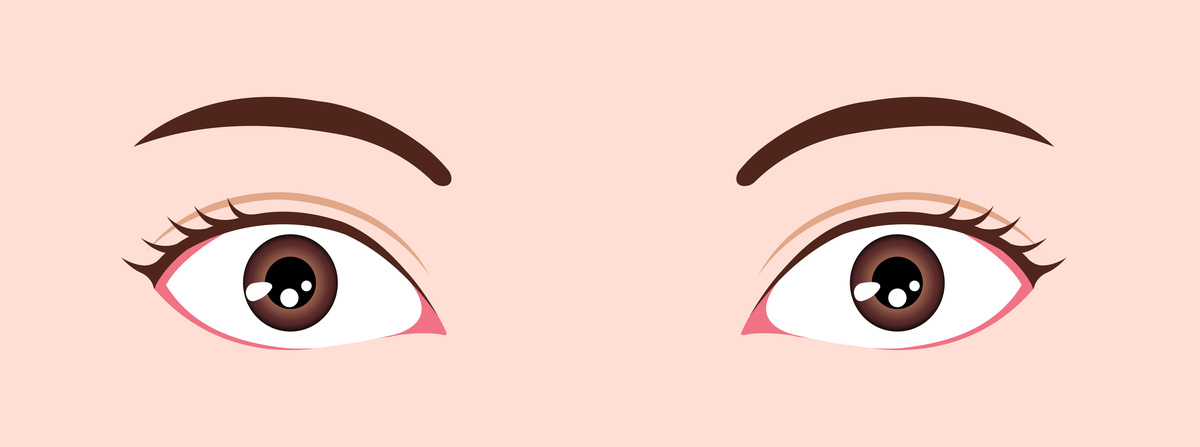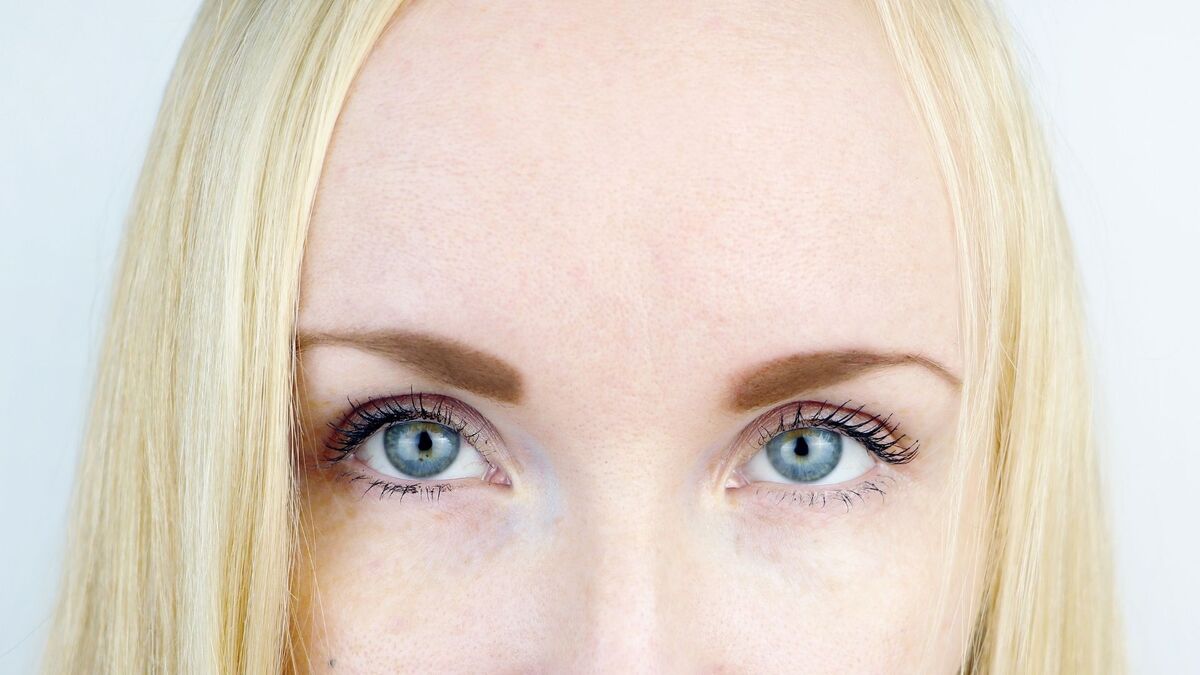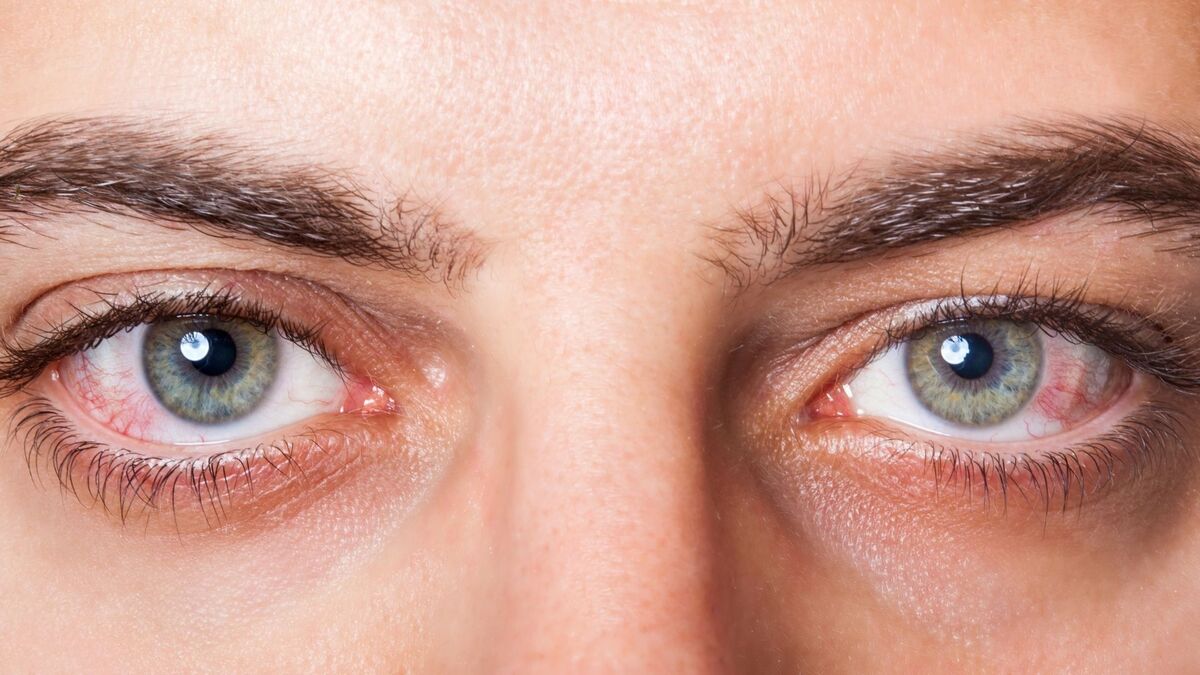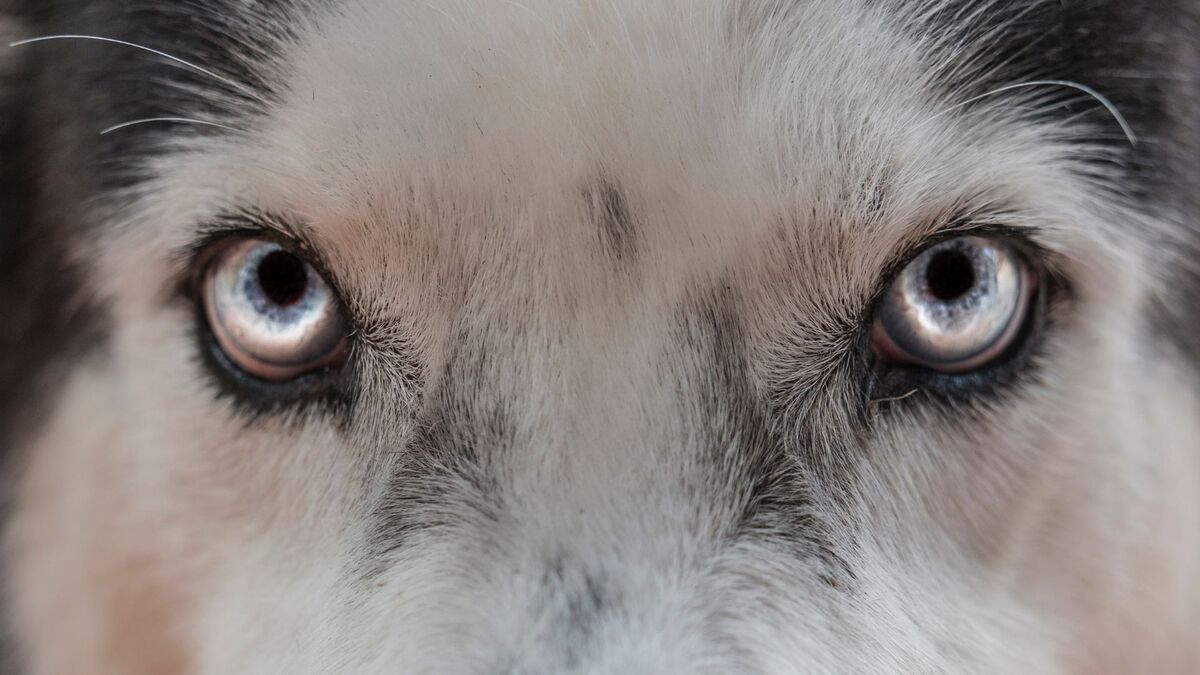Table of contents
General meaning of Sanpaku

Sanpaku eyes are, in general, eyes where the iris (the coloured part of the eye) does not reach all the way to the lower or upper eyelid, thus leaving a blank space when the person looks straight ahead. According to the Japanese, the term, which gained strength in the 1960s thanks to George Ohsawa, means 'three whites', in reference to these spaces around the iris.
Much is speculated about the eyes sanpaku, since it is believed that it has an influence on the way of life and even a direct relationship with the death of people. But calm down, this is not just speculation. Continue reading and understand why!
Sanpaku, the theory, its basis and predictions

Normally, if a person is looking straight ahead, the iris, the one that contains the eye color, reaches from one end to the other, leaving the sclera (white part of the eye) visible only on the sides.
Take the test! Go to the mirror and leave your head as straight as possible, and if you can see just the two sides, congratulations, your eyes have nothing unusual. However, if you notice that your iris doesn't meet either end, your eyes are sanpaku. Read on to find out what your eyes can tell you about your future and even your death!
What is Sanpaku
In 1965, macrobiotic theorist George Ohsawa published a book by the name "You Are All Sanpaku", in free translation, "You are all Sanpaku". In the book, George states that having this condition is an indication that the body is out of alignment - mind, body and spirit.
Ohsawa's idea is to make a comparison of the body with the position of the eyes, because the eyes being in balance and symmetrical, reveal a balanced body. Sanpaku eyes do not bring this balance and, depending on the position the iris is in, they mean different things.
Moreover, sanpaku eyes, according to George, indicate clues about people's destinies. And, although it sounds fanciful, the logic is simple. An unbalanced body, unbalanced actions and, consequently, an unbalanced destiny.
What is Sanpaku for Japanese
Although it is perceived as a bad thing and even as a 'bad omen', among the Japanese, sanpaku are very popular, including being used quite often in anime and manga, such as in Naruto and Pokémon.
For Japanese people, people with sanpaku eyes are endowed with great determination and strength, and are usually in positions of leadership and strong political action; they are also able to adapt to the most inhospitable environments. These are desirable characteristics among heroes and this explains the popularity of the eyes in representations of culture in Japan.
George Ohsawa's theory
When George Ohsawa talks, in 1965, about the unbalance meant by sanpaku eyes, he brings a series of elements to the discussion that are only widespread in the 1990s, when this idea gains strength here in the West.
Ohsawa is an advocate of the macrobiotic diet, which would be the solution to this physical, psychological and spiritual imbalance. Unlike what many people say, sanpaku eyes are not some kind of curse, it is only the body's signal that something is not as it should be, and according to George, the macrobiotic diet is the key.
Macrobiotic base
The idea of the macrobiotic basis is simple: to bring into balance the yin and yang within each of us. After much study, George developed the diet that consists mostly of the consumption of whole grains, vegetables and fresh fruit.
The book says that, throughout life, the lack of some nutrients messes with the position of the eyes and, in this way, they become more and more distant from their central axis, thus causing sanpaku eyes. The macrobiotic diet, according to Ohsawa, is the cure for all this.
The forecasts
After the release of the book, Ohsawa started talking about the subject in more visible places and even about personalities of the moment, such as John F. Kennedy and Marilyn Monroe who had this type of eyes. The personalities, by a misfortune, met tragic ends and this fomented the rumors about the sanpaku having a direct relationship in people's destiny.
And all this mystique gained a lot of strength, especially here in the crash, because the personalities had not only tragic deaths, but their public lives quite troubled and this, coupled with the imbalance cited by George, made the theory to be taken almost as a sentence.
The types of Sanpaku eyes

Although the most well-known type is the one that leaves the sclera visible at the bottom, there are two types of sanpaku eyes, known as 'Sanpaku Yin' and 'Sanpaku Yang'. And each of them has a meaning of the irregular functioning of the body.
The indications of sanpaku are many and, even, some believe that it can even tell if the person has homicidal or psychopathic tendencies. Read on to learn what the differences between the two types are and how to identify if you have either one!
Sanpaku Yin
Sanpaku Yin is the model we hear about the most, the one where the white part is below the iris. In theory, George suggests that people with this type of eye are susceptible to irrational attitudes and put themselves in danger most of the time.
Usually impulsive, they are gifted with a sense of heroism that often puts them in a vulnerable situation. Important names are on this list, such as Princess Diana, Abraham Lincoln, John Lennon and even Marilyn Monroe.
Sanpaku Yang
The Sanpaku Yang is a little less common, but its fame precedes it. In counterpoint to the Sanpaku Yin, the 'Yang' leaves a white band at the top of the iris. And, according to George, the person who possesses them may have violent and even homicidal tendencies.
The most well-known name who has these eyes is Charles Manson, a serial killer who was responsible for killing over nine people in late 1969 in the United States. Of course, having Sanpaku Yang eyes doesn't mean you're a psychopath, but it's a wake-up call to especially start reading up on the subject and how to control yourself.
Differences between Sanpaku eyes and normal eyes
It is worth noting that the exact angle for you to know whether or not you have sanpaku eyes is by looking straight ahead, because the tilt of the head can give the false impression that you have this type of eyes, even though you don't have them.
Another thing to take into consideration is that the negative personality traits that sanpaku people have are not something unique to the condition. That is, you can put yourself at risk in various situations and have aggressive tendencies and still not have sanpaku eyes.
The notion of "ocular balance
Although to some the theory still seems very unlikely and even ludicrous, George used the notion of eye balance to build the whole basis of sanpaku. As the saying goes, the eyes are the mirror of the soul and reading these mirrors can indicate many diseases.
A person who develops epileptic seizures, for example, usually has absence seizures before. These seizures are nothing more than small pauses in the gaze. Sanpaku advocates believe that the eyes are a reflection of the balance or lack of balance within us, and that they can be adjusted with an ideal diet.
Famous people with Sanpaku eyes
The popularization of sanpaku was mainly due to the large number of public personalities with the condition. John Lennon, John F. Kennedy, Lady Di and Marilyn Monroe are some of them.
However, those who think that sanpaku eyes are a thing of the past are mistaken, as current figures like Angelina Jolie, Robert Pattinson, Amy Winehouse and even Billie Eilish have this type of eyes. The condition can even be seen on the King and Queen of Pop.
How rare are, long-lived Sanpaku and common questions

Sanpaku eyes, in general, are not that common, but neither are they rare. Much is speculated about the condition and longevity of people who have them and, calm down, these types of eyes are not a death sentence, as some people think.
And, according to Ohsawa, with the ideal macrobiotic diet, you can bypass and even 'cure' yourself completely. The life of a 'Sanpaku Yin' can be long yes, he just needs to learn to preserve himself in some situations and prioritize for his physical integrity. Keep reading to understand more about sanpaku and the quality of life of those who have them!
How rare are the Sanpaku eyes
While there is no specific data on the number of people who have these eyes, sanpaku is common, though not popular, especially since it is a condition that may or may not be permanent.
The 'sanpaku yin' eyes, however, have been more documented than the 'sanpaku yang' ones, but there is no precise data on whether they are rarer, since there is no real study on the number of sanpaku people in the world.
How do I know if I'm going to die?
Popular predictions for 'sanpaku yin' are of tragic and usually premature death. The public stories we know about people with these eyes were like this, so it is understood as a repeating pattern. However, it is not a definitive sentence, just a consequence of a very risky and reckless lifestyle.
As for 'sanpaku yang' eyes, the forecast is equally sad, since the tendency to violence makes the life of those who possess them very lonely, and even in extreme cases, a life of imprisonment. Usually, 'sanpaku yang' people have difficulty in creating bonds because of their explosive temperament. But with self-control, everything can be resolved.
What is long life Sanpaku?
Unlike what people think, sanpaku can have a long life. The problem, usually, is linked to the quality of that life. Impulsive and aggressive people usually get into more trouble and do more thoughtless things.
If you have sanpaku eyes, take them more as a warning for you to ponder your actions and even some thoughts, because that is the real influence on your longevity, not the sanpaku itself. You are responsible for the actions you take, the sanpaku is an important factor, but one that can be controlled.
Is there a cure for Sanpaku?
Except for the macrobiotic diet, some oriental people believe that consuming some flower teas can 'undo' sanpaku eyes. And some also believe that they can refocus on their own throughout life.
Both the teas and the spontaneous eye balance have no proof of effectiveness, they are just speculations. The diet, however, is the recommendation made by George Ohsawa, which has the function of restoring the balance of mind, body and spirit. If you are sanpaku, it is worth trying the diet, because it is the only official 'cure'.
Causes for Sanpaku, according to medical authorities

Since sanpaku has a diagnosis given in a very superficial way, it is necessary to understand that there are clinical conditions that can give the false impression that a person has sanpaku eyes and that, perhaps, you should seek your doctor to know more about them.
The person may suffer with some retraction of the eyelids, both the lower and upper and this, over time, can leave the eyes unprotected, in addition to other effects that may arise over time. Check out some of these causes below!
Ectropion (drooping eyelid)
Ectropion is a condition in which the lower eyelid begins to droop outward, leaving the lower part of the eye more exposed than it should be. This can lead to chronic conjunctivitis because the eyes do not close completely, making them susceptible to dust and dust mites. It is important to see a doctor, as the condition can develop into a retinal ulcer.
Usually, the ectropion affects people with the most advanced age, however, it is not uncommon to affect younger people too, which compromises the quality of life. Many can be the causes, such as some scar near the eye, burns and some argue that even stress can be one of the causes.
Retraction of the lower eyelid
The retraction of the eyelids is also a condition that can give the false impression of sanpaku eyes. There is retraction of the lower eyelid, upper eyelid and both, which is already much more serious, because it implies constant infections in the eyes.
The most common cause for this retraction is the lack of thyroid control, which can displace the eyes a little, giving this difference in the length of the eyelids. The retraction, in this case, is the symptom of a disease that affects the whole body, requiring you to seek a doctor.
Exophthalmos and Proptosis
The lack of thyroid control can also be the cause of exophthalmos, which is an increase in intraocular pressure, making the eyes bulge. This happens because there is a narrowing of the orbit, which throws the eyes forward, because they don't fit where they should be.
The proptosis has the same foundation, however it is a misalignment of the iris, because as the eyes are off the axis that they should, it can happen a displacement of the position of the iris, both to the right and to the left. Both diseases are very serious and require medical monitoring.
Lipid deposits
The lipid deposits are nothing more than small pockets of fat that can form around the eyes. As they have some weight, the eyes usually give a little down, giving the impression of being sanpaku.
These bags can have numerous causes, from an unregulated sleep or even a genetic inheritance. Usually, they are not a sign of something more serious, but people bother because they compromise a little the aesthetics of the face.
My dog seems to have sanpaku eyes, what does it mean?

Relax! dogs cannot have eyes sanpaku, even that, in some, the part of bass of the iris is visible. that happens because dogs do something known as 'eyes of the puppy', the known face of doo, that leaves them more cute and they know that, then they do it when they want something of the owners.
Some dog breeds, still, have the 'droopy' eyes as a breed trait, so it is absolutely normal for the lower sclera to appear without them doing anything special. Although there is no record of George Ohsawa about it, sanpaku does not affect animals.

